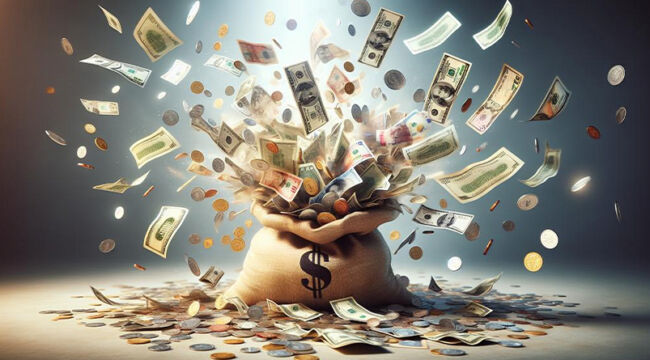The Case for Cash
Following the global financial crisis, I grew to despise cash.
The era of ZIRP (zero interest rate policy) meant yields on savings accounts, CDs, and bonds were pitifully low.
For years we were earning less than 1% on cash, while real inflation was more like 3-4%. That translated to a 2-3% annual loss in real purchasing power. This was textbook financial repression.
So for a long time, having excess cash around seemed downright wasteful. Starting in 2008, I parked much of our savings in gold ETFs. It was far more volatile than a savings account, but overall it outperformed.
Fast forward to today, however, and yields on cash are finally respectable. By shopping around you can find over 4% in a savings account. Short-term treasury bills offer yields around 4.3%. Money markets range up to 5%, although that’s not FDIC insured.
For now at least, yields are keeping pace with inflation. And that’s a welcome change.
Retrain Your Brain
If you’re anything like me, you may have to rewire your brain to understand that cash is no longer a bad asset.
There are excellent reasons to hold cash today. Stock prices are bubbly and economic uncertainty looms. Both trade wars and hot wars are heating up. Potential black swans abound.
In a recent article for Strategic Intelligence subscribers, Jim Rickards explained the situation we find ourselves in today with regard to stock prices.
“Markets are at or near all-time highs based on every available metric: P/E ratios, CAPE ratio, market cap/GDP ratio, concentration risk, etc. This is accompanied by indexing, investor complacency and analyst euphoria. When such conditions have existed in the past, they have always been followed by market crashes of 50% to 90% unfolding over several years. Examples include Dow Jones (1929), Nikkei (1989), NASDAQ (2000), and S&P 500 (2008).”
Well said. As a result of these conditions, I’ve been building a larger cash position. I’m taking profits in some long-term investments, and letting excess savings sit longer than I typically do.
Cash and short-term investments now make up about 17% of my portfolio. Precious metals make up another 12%. Given that I have another 20 years or so until retirement, this is considered rather conservative. But I feel it’s justified in this environment.
Just look at Uncle Warren. Buffett’s Berkshire Hathaway reported $325 billion in cash at the end of Q3 2024. The company’s market cap is around $972 billion, so roughly 1/3rd of Warren’s firm is currently sitting in cash. That’s far higher than it’s ever been.
Buffett has been taking profits on long-term investments including Bank of America (BAC) and Apple (AAPL). In this case, I believe following Warren’s lead will prove to be a wise long-term decision. The fact that he has exited most of his U.S. bank positions is a bit worrying.
There’s a good chance that we’ll get a chance to buy excellent companies at substantial discounts over the next year or two.
A Balanced Approach
All of this doesn’t mean I’ve given up on US equities. I still own a lot of them, and will continue to. Having a significant amount of cash on hand doesn’t mean you have to completely exit the market.
It’s simply prudent to have cash on hand earning around 4% today. If we get a 40% correction, which is entirely possible, the opportunity cost of not having cash on hand will be substantial.
We don’t know what will happen with yields going forward. But for now, we can still earn a decent return on cash. Take advantage of it. And be ready to buy if we do see a crash.



Comments: